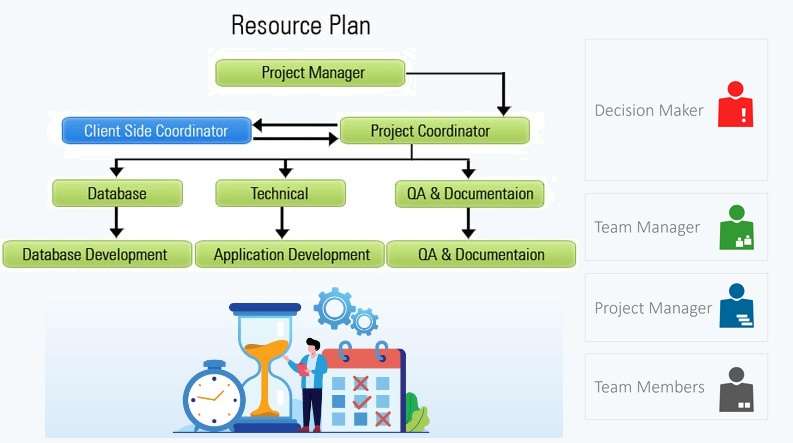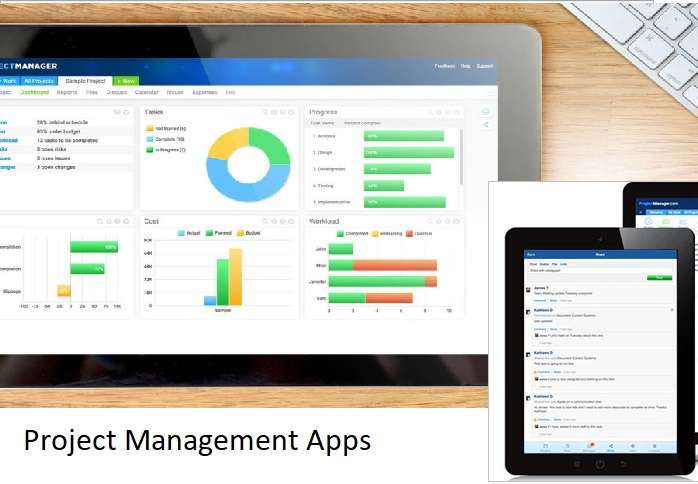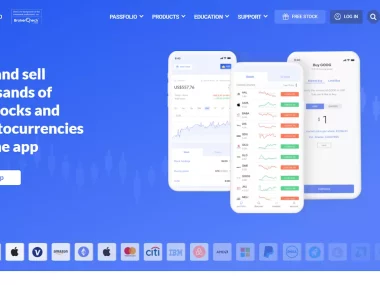Planning and executing projects reliably is one of the key tasks of a company. Part of this is the efficient use of resources. We explain what resource planning is, the benefits it brings, and what it entails.
The efficient use of resources is one of the most important entrepreneurial tasks in everyday practice. Regardless of the industry and size, companies depend on projects being reliably planned and executed. This is where resource planning comes into play.
Planning of resources in project management is becoming more and more important these days because it is an important prerequisite for entrepreneurial success. Successful project resource planning not only minimizes any additional costs – it also maximizes the company’s flexibility.
Those responsible are often faced with a whole series of complex challenges that they can only really master with the right processes. Software solutions for project management can be used to enable companies to keep an eye on all relevant resources at all times.
Are you wondering what else is behind resource planning in project management? Then you are right here. We explain what resource planning is, what advantages it brings and what resource planning entails.
What is resource planning?
The term resource planning refers to the process of planning all material and immaterial resources that are required for a project – such as time, money, and human resources. The focus is on the goal of completing projects as quickly and efficiently as possible.
For this purpose, both necessary and available resources are identified, planned, and allocated to ensure a smooth process. Planning of resources in project management ensures that the resources required for a project are in the right place at the right time.
Who is responsible for the resource planning of a project?
Project management or manager is basically responsible for planning the resources of a project. He or She coordinates tasks and responsibilities so that deadlines can be reliably met. In addition, the project management regularly reports the progress to the project office to ensure the long-term viability of the project.
What are the benefits of resource planning?
Good resource planning comes with numerous benefits. Not only does it enable precise documentation and optimal resource utilization, but it also creates additional planning security at all levels. Companies that determine their resource requirements early and schematically can not only avoid bottlenecks but also learn for the future.
They can also better plan the deployment of the necessary staff, which in turn ensures more satisfaction among the employees, who remain with the company in the long term.
What does resource planning include specifically for project management?
In order to carry out Planning of resources correctly, it is first important to distinguish between the different types of resources that resource planning in project management contains. Resources are all those things that contribute to the completion of a project along the value chain.
Basically, a distinction is made between material resources, such as budget and material, and immaterial resources, such as time and personnel. What they all have in common is that they are indispensable for trouble-free operations.

Why is efficient planning of resources important?
Careful resource planning contributes significantly to the transparency of a project – and is therefore very important when it comes to understanding all relevant steps. Should problems arise during processing, resource planning can be used, for example, to search for a solution directly without causing delays or increasing costs.
In addition, Planning of our resources is elementary when it comes to optimally coordinating staff in the context of time management. If there are not enough resources available, the problem is documented in detail by resource planning, which allows the company to learn for the future.
Challenges and stumbling blocks in resource-planning in project management
For those responsible, resource planning brings with it a whole range of complex challenges. In order to ensure the optimal utilization of resources, numerous planning components must be taken into account.
Otherwise, there is a risk that projects cannot be completed on time due to insufficient resources. Due to the fact that too few suitable resources are available, the project costs increase in turn. In addition, there is the stumbling block that business opportunities are not used and projects have to be rejected because the necessary resources were not procured in time.
Accordingly, it is important that the project manager has the ability to implement a uniform system for resource planning – for example with the help of a suitable project management tool. When making the final choice, an appropriate one can be helpful for software selection criteria.
How do you create a resource plan for a project?
A resource plan serves as a blueprint that identifies, lists, and organizes the resources needed for a project. This is the only way to ensure that all work is carried out efficiently and on time. For this purpose, a continuous planning process is indispensable.
Incidentally, modern resource planning is digital. Project management tools ensure in real time that the project manager keeps track of resource availability. Thanks to the visualization, essential information can be called up at any time. This gives companies more clarity about their capacities, cost drivers, and risk factors, which in turn helps to better plan future projects.
Cost course and total cost line as a tool for planning
In order to keep an eye on the expenses that a project entails at all times, so-called cost progression and total cost lines are often used. This is an instrument that is intended to enable better control at the management level because cost differences can be identified more quickly and efficiently.

The cost curve is the sum of the costs planned for each month over a specific period of time. The total cost line, on the other hand, represents the accumulated expenses of a project.






